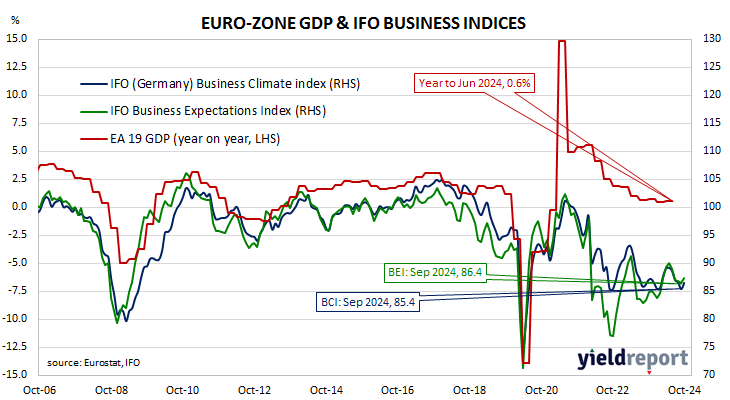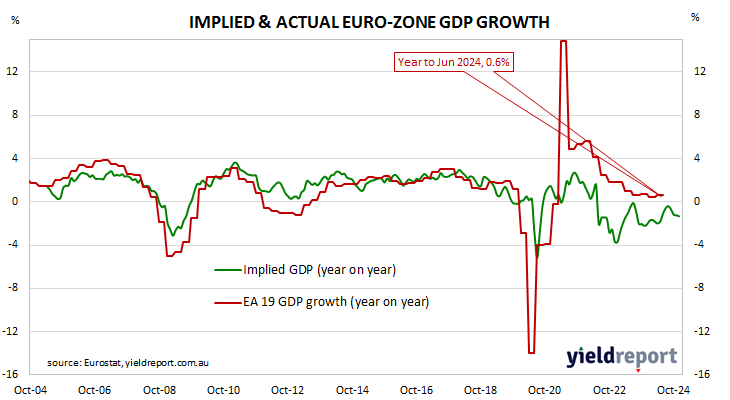Summary: ifo business climate index up in October, slightly above expectations; outlook improves but marred by scepticism; current conditions, expectations indices both improve; German, French yields rise; expectations index implies euro-zone GDP contraction of 0.7% in year to January.
Following recessions in euro-zone economies in 2009/2010, the ifo Institute’s Business Climate Index largely ignored the European debt-crisis of 2010-2012, mostly posting average-to-elevated readings through to early-2020. However, the index was quick to react in the March 2020 survey, falling precipitously before recovering quickly in subsequent months. Readings through much of 2021 generally fluctuated around the long-term average before dropping away in 2022 and stagnating through 2023 and 2024.
According to the latest report released by ifo, German business sentiment has improved for the first time in five months. October’s Business Climate Index posted a reading of 86.5, slightly above the generally expected figure of 86.0 as well as September’s final reading of 85.4. The average reading since January 2005 is just over 96.
“Expectations were brighter but marked by scepticism,” said Clemens Fuest, President of the ifo Institute. “The German economy stopped the decline for the time being.”
German firms’ views of current conditions and the outlook both improved. The current situation index increased from 84.4 to 85.7 while the expectations index increased from 86.4 after revisions to 87.3.
German and French long-term bond yields both increased on the day. By the close of business, the German 10-year bond yield had added 3bps to 2.30% while the French 10-year yield finished 7bps higher at 3.06%.
The ifo Institute’s business climate index is a composite index which combines German companies’ views of current conditions with their outlook for the next six months. It has similarities to consumer sentiment indices in the US such as the ones produced by The Conference Board and the University of Michigan.
It also displays a solid correlation with euro-zone GDP growth rates. However, the expectations index is a better predictor as it has a higher correlation when lagged by three months. October’s expectations index implies a 0.7% year-on-year GDP contraction to the end of January 2025.



